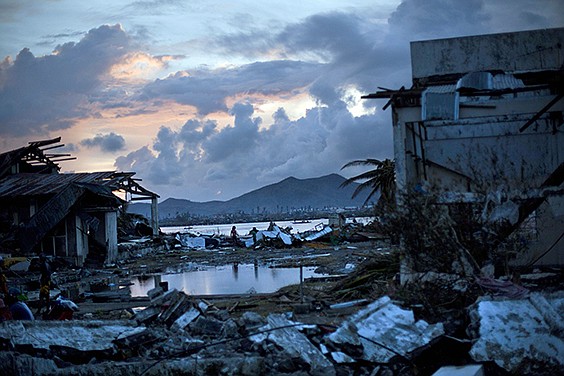TACLOBAN, Philippines (AP) - A run-down, single-story building with filthy floors at Tacloban's ruined airport has become the area's main medical center for victims of last week's powerful typhoon. It has little medicine, virtually no facilities and very few doctors.
What it is not short of are patients.
Hundreds of injured people, pregnant women, children and the elderly have poured into the squat, white building behind the control tower since Typhoon Haiyan ravaged the eastern Philippines on Friday, killing thousands. Doctors who have been dealing with cuts, fractures and pregnancy' complications said Wednesday they soon expect to be treating more serious problems such as pneumonia, dehydration, diarrhea and infections.
The medical woes add to the daunting tasks for authorities, including dealing with looters and clearing the bottlenecks holding up thousands of tons of aid material from coming in.
"The priority has got to be, let's get the food in, let's get the water in. We got a lot more come in today, but even that won't be enough, we really need to scale up operation in an ongoing basis," U.N. humanitarian chief Valerie Amos told reporters after touring Talcoban, the capital of Leyte province. Her office has released $25 million in emergency relief fund, accounting for a chunk of the millions of dollars pledged by countries around the world.
The World Food Program distributed rice and other items to nearly 50,000 people in the Tacloban area Wednesday, U.N. spokesman Martin Nesirky said.
While the cogs of what promises to be a massive international aid effort are beginning to turn, they are not quick enough for the 600,000 people displaced, many of them homeless, hungry and thirsty.
With the Tacloban airport battered and roads made impassable by debris, very little aid has arrived in the city. Most of it is stuck in Manila and the nearby airport of Cebu, a 45-minute flight away.
Many among the desperate residents have resorted to raiding for food. Mobs overran a rice warehouse on Leyte, collapsing a wall that killed eight people. Thousands of sacks of the grain were carted off. Also Wednesday, security forces exchanged gunfire with an armed gang.
Tacloban Mayor Alfred Romualdez urged residents to flee the city because local authorities were having trouble providing food and water and maintaining order, The New York Times reported. He said the city desperately needed trucks to distribute relief shipments accumulating at the airport as well as equipment to pull decaying corpses from the rubble.
Despite those incidents, police said the situation was improving.
"We have restored order," said Carmelo Espina Valmoria, director of the Philippine National Police special action force. "There has been looting for the last three days, but the situation has stabilized."
With the local police force unable to operate - most were victims - the government rushed thousands of soldiers and 600 policemen from other parts of the country. The security forces, including army engineers, are helping clear roads and remove the dead, many of them on roadsides. A 6 p.m. to 6 a.m. curfew was in place.
The death toll rose to 2,344, according a national tally kept by the disaster agency. That figure is expected to rise, perhaps significantly, when accurate information is collected from the whole disaster zone, which spreads over a wide swath of the eastern and central Philippines but appears to be concentrated on two main islands - Leyte and Samar.
The government says planes, ships and trucks were all on their way, loaded with generators, water purifying kits and emergency lights - vital equipment to sustain a major relief mission. Airports were reopening in the region, and the U.S. military said it was installing equipment to allow the damaged Tacloban airport to operate 24-7.

